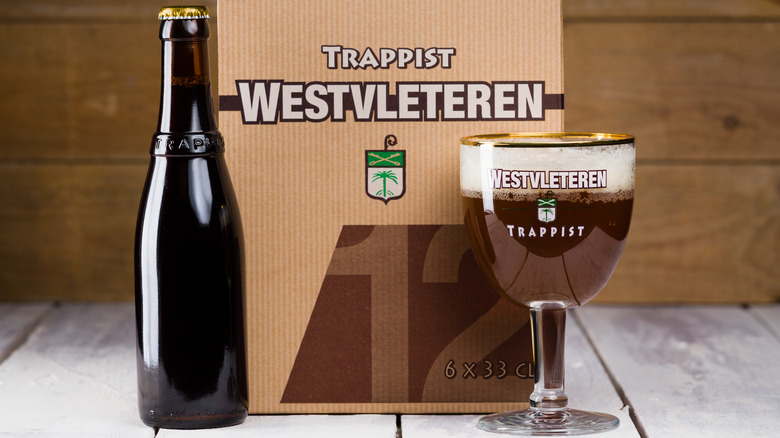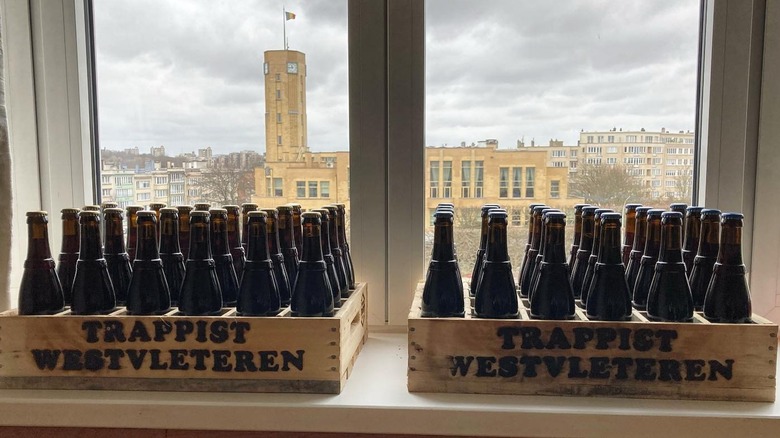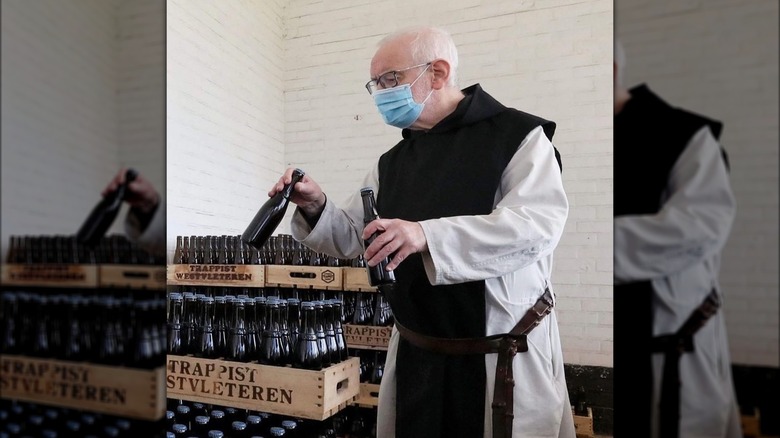Why Is Westvleteren 12 Beer So Rare?
Monks and beer may sound like an unlikely combination unless you've heard of Trappist beers. In just about a dozen monasteries or abbeys around the world, most of them in Belgium (about six), monks use traditional methods and recipes to make relatively small batches of beer, and occasionally cheese, chocolate, and bread. Westvleteren is one of the oldest monastery breweries, and Westvleteren 12 is their strongest, and arguably most popular, beer.
While there are other monk-made liquors, like the French aperitif Chartreuse, being labeled an authentic Trappist beer requires certification from the International Trappist Association (ITA). Several conditions need to be met: The beer must be brewed within the abbey under the supervision of monks and proceeds from beer sales can only go into the abbey's upkeep. Westvleteren 12 in particular can only be purchased at the Sint-Sixtus Abbey of Westvleteren in Belgium with prior registration after you've navigated multiple waiting periods including a compulsory one-month gap between orders. In a rare departure from custom in 2012, however, the monks brewed a limited run of beer, which was exported to raise funds to fix the abbey roof.
Not only is Westvleteren 12 difficult to obtain, but it also has high demand because it's an exceptional beer that tastes much better than its 10.2% alcohol content would suggest. The price isn't prohibitive unless you factor in the cost of a flight to Belgium; it's the process of obtaining it and the high demand that makes it so rare.
Buying Westvleteren 12 is a modern-day pilgrimage
The process of procuring a crate of Westvleteren 12 or the abbey's other two beers (a blonde and the Westvleteren 8) starts with registering on their online store, which has specific opening hours and may require a waiting period. Beer can be collected only on specific days from the abbey, and you'll have to arrive in a pre-registered car, with only one order allowed per car. Unsurprisingly, there is a cap on how much beer you can purchase in a single order. Despite this, the street on which the abbey is located had to be made one-way because of the traffic congestion caused by beer purchasers.
Westvleteren beers are available either in 24-bottle crates or 6-bottle packs, and in addition to an overall purchase limit, there is also a (rather generous) 4-crate limit on each type of beer. A crate of Westvleteren 12 will cost you 56 Euros (about $60) with an additional refundable deposit of about $20 for the crate and bottles. This isn't too expensive for a beer this rare, but remember, those who brew it are not doing so for profit. This is also why the beer isn't brewed every day but a minuscule 42 days a year, producing only about 6000 hectolitres annually. For perspective, all the beers brewed by Anheuser-Busch InBev, the world's largest beer brewer, added up to 518 million hectoliters in 2022, making Westvleteren beers a literal (and delicious) drop in the ocean.
Monks brew Westvleteren using traditional and modern methods
Westvleteren beers are made with a traditional "infusion brew" method and a mix of natural ingredients including hops, yeast, water, and a form of local sugar made from sugar beets called candy syrup. The traditional fermentation process in open yeast vessels, which can take about a week, lends the beer its distinctive aroma. Westvleteren 12, also called Flemish Burgundy, has been described as having a mix of raisin and nutty notes. The bouquet is intensified by a second round of fermentation that occurs in the bottle, and the beer is matured for up to 12 weeks before being put on sale. Because it is fermented in the bottle, the flavor of a sealed Westvleteren 12 beer evolves as it ages, unlike conventional beer which may expire.
The process of making Westvleteren beers was updated in the late 1970s to improve the beer's quality and consistency. However, the abbey and its monks have brewed beer for almost two centuries. Initially brewed in small quantities to be consumed within the abbey, records show that a brewery was constructed in 1838 and the first official brew of the abbey was made in 1839. The facility has since been expanded and updated multiple times and uses modern equipment in the brewery and bottling plant. As part of the modernizing process, and quite likely to reduce the crowds on collection days, the abbey is also testing out a home delivery program for addresses within Belgium. This will hopefully make it a bit easier to get your hands on the beer, as long as you reside in Belgium, at least.


